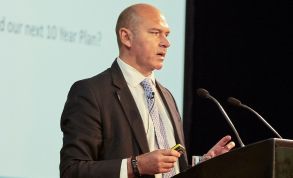ERF payments could be linked to further activity targets
 The £2.3bn elective recovery fund (ERF) aims to incentivise additional elective activity over and above pre-pandemic (2019/20) activity levels.
The £2.3bn elective recovery fund (ERF) aims to incentivise additional elective activity over and above pre-pandemic (2019/20) activity levels.
Payments to providers can be adjusted up or down (by 75% of the tariff value) by commissioners if actual activity delivered is above or below 104% of 2019/20 levels of value-based activity. Adjusted downwards, it is known as clawback.
ICBs are generally assuming funding clawed back from providers will remain in system-level budgets, allowing them to offset any aggregate deficits against plan overall. However, a few have noted the risk that the clawback will be returned to central funds – adversely impacting on both provider and system financial positions.
In an interview with the Health Service Journal, national director of elective recovery Sir James Mackey (pictured) said there would be no clawback for elective underperformance against plan in the first six months of the financial year.
And he hinted that, while no final decision had been taken, changes could be made to the incentive system for the second half of the year. This might see some providers handed customised activity targets, which would be the new basis for ERF. While some trusts were forging ahead of activity plans, most were reporting activity less than the 2019/20 baseline. Sir Jim said many of these trusts had good reason for their lower activity. But performance in some providers was inexplicably low, and these trusts could face individual targets that must be achieved to receive funding in the second half of 2022/23.
Contacted by Healthcare Finance, NHS England confirmed Sir Jim’s comments – that there would be no clawback in the first six months, and further elective activity targets were being considered for trusts with inexplicably low activity. However no official communication has been issued.
Clawback position
Some ICBs have reported uncertainty over the position on clawback. In its October board papers, for example, South West London Integrated Care Board said at month 5, the trusts in the ICB area showed an aggregate adverse variance of £10m. This was mainly driven by the assumption that ERF funding would be clawed back due to lower than planned activity levels.
This shortfall was offset by the ICB’s positive variance of £11m, which includes £10m due to the assumption over the trust clawback and £1m from efficiency delivery ahead of plan.
In North East London, the ICB reported last month that £15m had been held at system level due to trusts’ under-delivery of elective activity against plan. This remained a risk for the full-year financial position pending clarification of the treatment of clawback. The gross full year risk to the system was £36m, it said.
While forecasting break-even against plans, other ICBs frequently name under-delivery against ERF plans as a reason for provider deficits in the year to date, and as a key risk for the rest of 2022/23.
While most ICBs report a financial risk due to under-delivery against the 104% of value-based activity, Black Country Integrated Care Board said in September that its risk relates solely to stretch targets beyond the 104% ERF target assumed in financial plans. The risk is on £8.6m of ERF stretch income included in its June planning submission.
Related content
The value masterclass shares examples of organisations and systems that have pursued a value-driven approach and the results they have achieved.
This webinar series offers colleagues of ICS organisations the opportunity to discuss common priorities, challenges, and successes within their field.